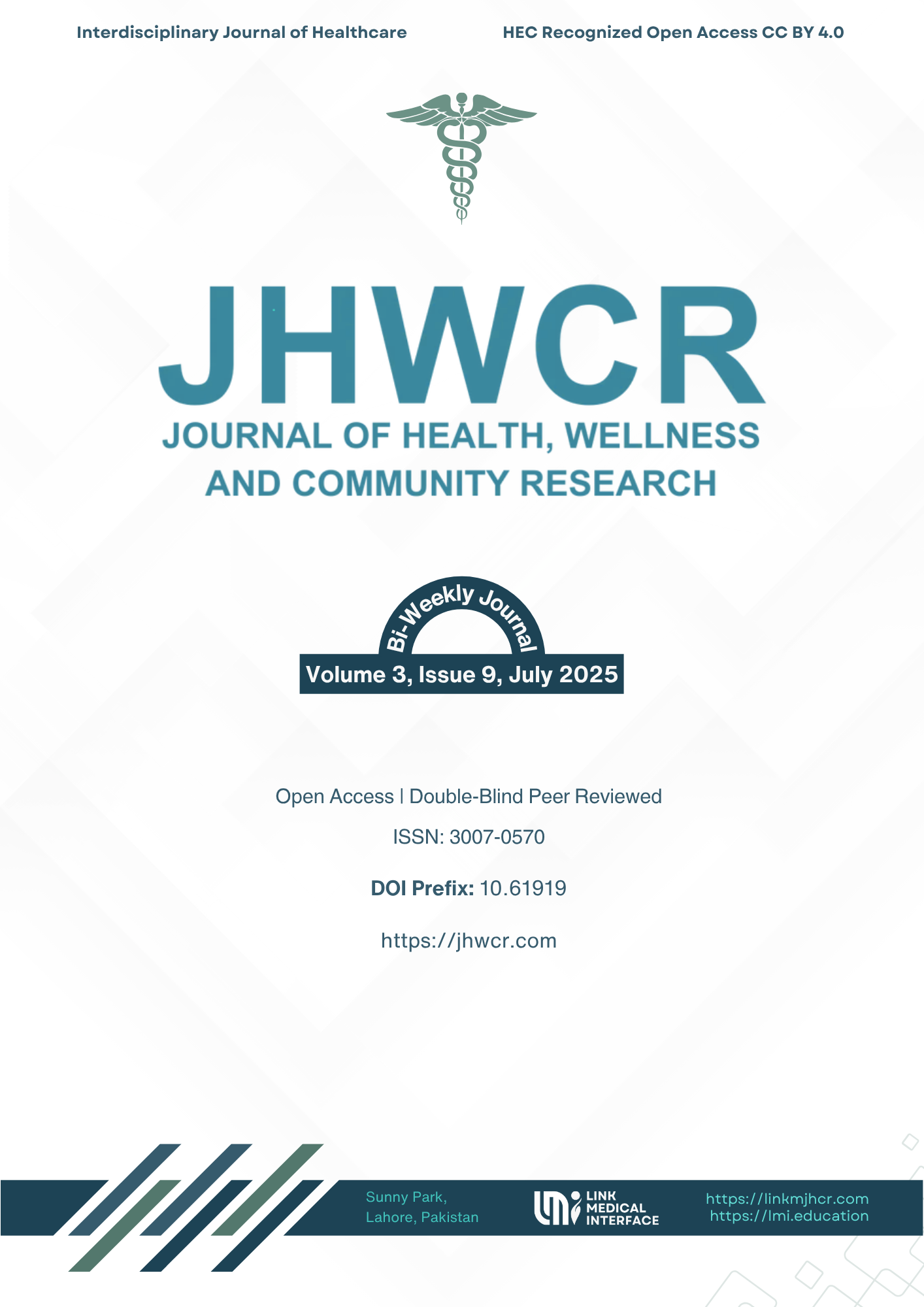Functional Outcome of Arthroscopic Fixation of Tibial Spine Avulsion Fracture with Cortical Screw
DOI:
https://doi.org/10.61919/n9gfc545Keywords:
Tibial spine avulsion, Arthroscopy, Cortical screw fixation, Lysholm score, Knee function, ACL injury, Rehabilitation outcomesAbstract
Background: Tibial spine avulsion fractures involve disruption of the anterior cruciate ligament (ACL) insertion and may result in chronic knee instability if not properly managed. Arthroscopic cortical screw fixation offers biomechanical stability, reduced invasiveness, and accelerated recovery compared to open procedures. However, there is limited regional data on postoperative outcomes in adult populations. Objective: To determine the functional outcome of arthroscopic fixation of tibial spine avulsion fracture with cortical screw at Hayatabad Medical Complex, Peshawar Methods: This descriptive cross-sectional study included 62 adult patients aged 18–65 years with radiologically confirmed tibial spine avulsion fractures treated arthroscopically with cortical screw fixation at Hayatabad Medical Complex, Peshawar, from August 2024 to April 2025. Functional outcome was assessed 10 weeks postoperatively using the Lysholm knee scoring scale. Complications were documented, and subgroup analyses were performed based on age, gender, BMI, and education level. Statistical analysis was conducted using chi-square and Fisher’s exact tests with a significance threshold of p<0.05. Results: The mean Lysholm score was 87.3 ± 11.2. Overall, 83.9% of patients achieved excellent or good outcomes, with 38.7% classified as excellent and 45.2% as good. Younger patients (18–30 years) had significantly higher success rates (92.9%, p=0.023) compared to older adults (66.7%). Educated patients also showed superior outcomes (89.5% vs. 75.0%, p=0.043). Complication rates were low: knee stiffness (9.7%), superficial infection (4.8%), and laxity (3.2%). Conclusion: Arthroscopic cortical screw fixation for tibial spine avulsion fractures is a safe and effective surgical technique, yielding high functional success and low complication rates. Age and education level significantly influence recovery, highlighting the importance of personalized rehabilitation and patient education.
Downloads
Published
Issue
Section
License
Copyright (c) 2025 Fazal Amin, Wasim Anwar, Muhammad Ihtisham Khattak, Zarar Ahmad, Hamza Rafi, Muhammad Dayan Khan (Author)

This work is licensed under a Creative Commons Attribution 4.0 International License.


